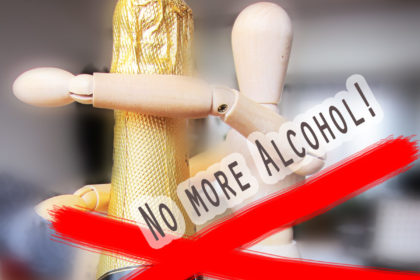Children should be able to brush their own teeth around the time they’re skillful enough to tie their shoelaces – in an age of velcros, let’s say this with numbers – around 6 years of age. But be observant – some children are fine managing on their own at this age, but with most, it’s best to follow their effort with you checking up and finishing the job until they’re 8 or even 10. Now, how to teach them to do it properly?
First of all, teach yourself. The brushing techniques of old (back and forth, off you go) have been undergoing some evolution. Today, circular motion, or light vibrations of the bristles in the spaces between the teeth and then sweeping away from the gums are the recommended methods of brushing (as demonstrated for instance here).
Arm yourself with five excellent tools:
- Proper toothbrush for children
- Proper interdental toothbrush for children
- Mock-up of teeth (you remember those wind-up chattering teeth? They’ll do great. Play-Doh also does a dental set which is even better because it opens nice and wide, plus you can graphically demonstrate the terrible outcome bad cleaning might have!)
- Yummy toothpaste
- (optional) Plaque-disclosing fluid (e.g. Trace)
- Video
Proper toothbrush for children
Manual or electric? They both appear to work equally well so it’s really up to your children’s personal tastes and your wallet. Some children love electric toothbrushes, some aren’t fans. Softness of bristles is a more important aspect. If your child tends to push hard on the toothbrush, non-electric may be somewhat safer.
A good toothbrush for kids should have ultra-soft bristles and a small, compact head. Try out what you’re buying – many producers designate their toothbrush “soft”, but the bristles are actually hard enough to scratch your gums very unpleasantly. That’s not good – the gum isn’t exactly happy with that, especially when irritated from teething, and it will make your child dislike toothbrushing even more. You can try Curaprox (our personal favorite), TePe, or Fuchs Natural Bristle.
Interdental brush
For many years, everybody was recommending flossing. I don’t know about you, but I always injured my gums flossing and recent studies even show that flossing isn’t all it’s been touted to be. There is a much more convenient, fun for kids and efficient way – interdental toothbrush!
While dental floss basically cannot fully clean the (curved) sides of the teeth and can only remove larger bits of stuck pot roast (although that’s where it shines!), interdental brush – being a brush – cleans the curves between the teeth very nicely and helps keep dental caries away. They’re very simple to use, you just need to find the right size for your child (he may actually need two different sizes for different spaces). They are color-coded so it’s quite easy to remember that it’s pink for bottom front and red for the rest. To find out the right size, you can either buy a sampler pack of interdental toothbrushes and check for each tooth which is the right size for that specific space, or get advice from your dental hygienist. If you’re testing yourself, try the toothbrushes until you find the one that just about gets there – it should be a snug fit.
In the beginnings, you may need to wiggle the brush a bit to get inside, but this will soon become a routine.
The kids should NOT move the interdental brush back and forth – you only stick it through, once, pull it out, rinse it, next tooth – in, out, rinse brush, next tooth – etc. etc. It’s quick, easy and surprisingly pleasant.
How to actually teach them
You can make a project afternoon with your children, concluded perhaps with xylitol-sweetened chewing gums as a reward?
You can all watch a video, for instance this one – and then they demonstrate to you on the clacky (or Play-Doh) set of teeth how it should be done.
Then it’s time for their own set – watch carefully and correct.
You may want to repeat this a few times, e.g. after fourteen days or so if you see they’re slipping or cutting corners.
Feel free to find another video if these aren’t really your style. However, there is a surprising number of videos out there on how to teach your child to brush, which suggest wrong techniques – e.g. showing (or even recommending) the child brushing back and forth on the front teeth, possibly on the assumption that anything is better than nothing. But you’re creating a habit of a lifetime, so choose your video wisely.
And to conclude, a personal note on Toothpaste:
Just a short mention – which toothpaste you take is, of course, entirely your choice. Let me just drop a few interesting facts:
– fluorosis (discoloration and problems with teeth due to excessive use of fluoride) is an issue with 41 % of US teenagers.
– many kids, especially if the toothpaste has a fun flavor, swallow more of it than is estimated. The fluoride they swallow from the toothpaste alone exceeds the recommended daily intake from all sources – and there are other sources of fluoride.
– fluoride does make teeth harder – but also more brittle. CDC itself said in 2001: “The prevalence of dental caries in a population is not inversely related to the concentration of fluoride in enamel, and a higher concentration of enamel fluoride is not necessarily more efficacious in preventing dental caries.”
– there are over 50 studies linking lowering of IQ to fluoride.
– fluoride is not an essential nutrient – the body doesn’t need it for anything.
– especially if you live in an area with fluoridated water, your children are already receiving well more than enough.
Although we first viewed this anti-fluoride movement as a whacko conspiracy theory, these and other arguments eventually led us to choose non-fluoride toothpaste for both our kids and ourselves. There are other ways to provide the necessary nutrients your teeth need to be strong, as briefly explained here.
Whichever toothpaste you choose, it’s a good idea to have two or three flavors available for the kids to choose from. A skilled parent can turn the question “to brush or not to brush” into “do I want the strawberry, or the watermelon”?
Whatever your choices or methods, we hope your kids will be very happy brushers and that your visits to the dentist will be pleasant and tear-free!




